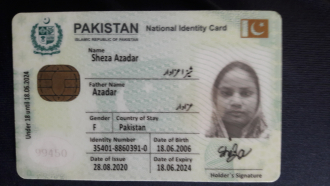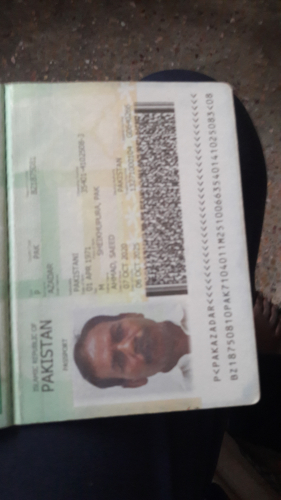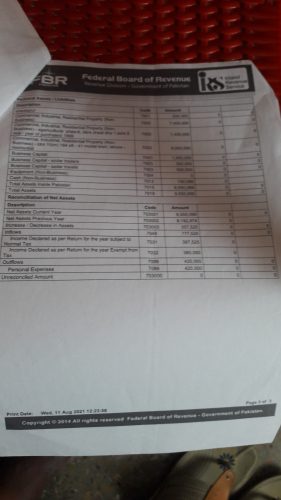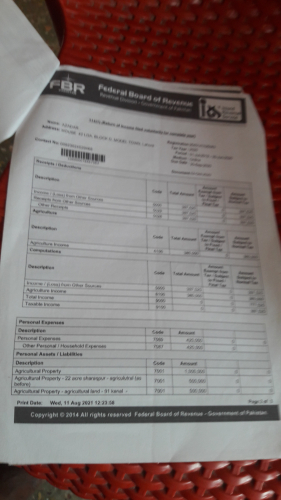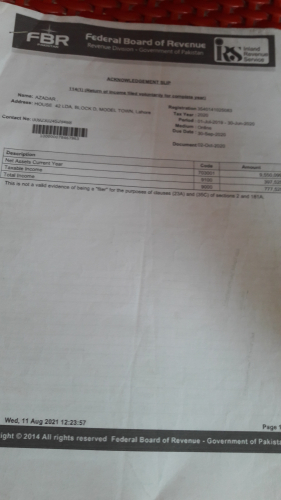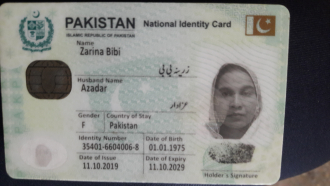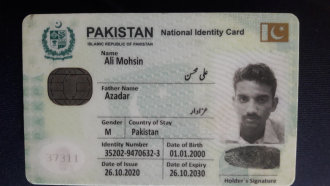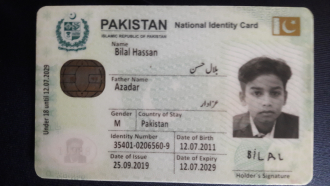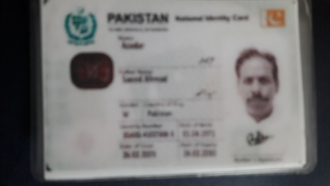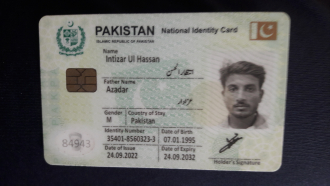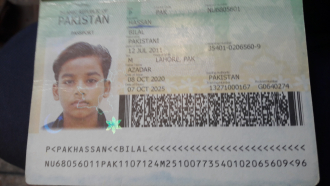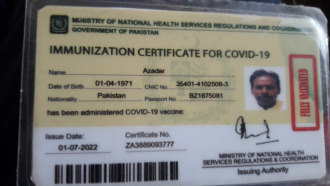Advertisement
Advertisement
Bilal Hussan Bilal
About me:
I haven't shared any details about myself.
About my family:
I haven't shared details about my family.
Updated: August 21, 2023
Message Bilal Hussan Bilal
Loading...one moment please


Recent Activity
Bilal Hussan Bilal
loved a comment
Aug 21, 2023 5:06 AM
Bilal Hussan Bilal
commented
Jul 17, 2023 6:58 PM
Bilal Hussan Bilal
followed a bio
Jul 17, 2023 6:51 PM
Bilal Hussan Bilal
followed a bio
Jul 17, 2023 6:51 PM
Bilal Hussan Bilal
followed a bio
Jul 17, 2023 6:50 PM
Photos Added
Recent Comments
Bilal Hussan Bilal
commented
Jul 17, 2023 6:58 PM
Bilal Hussan Bilal
commented
Jul 17, 2023 6:41 PM
Bilal Hussan's Followers
Azadar Azdar
About me:I haven't shared any details about myself.
Favorites
Loading...one moment please


Uk Uk (Uk) Orentier of Stawell Australia. Family, friend, or fan, this family history biography is for you to remember Uk Uk Orentier.
Uk Uk (Uk) Cahill of Bungaree Australia. Family, friend, or fan, this family history biography is for you to remember Uk Uk Cahill.
Uk Uk (Uk) Hallam of Heidelberg Australia. Family, friend, or fan, this family history biography is for you to remember Uk Uk Hallam.

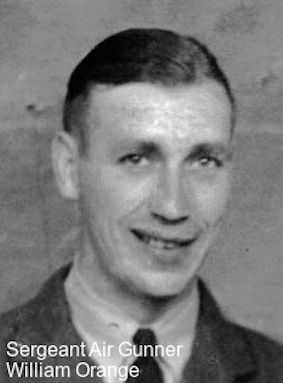
William Orange
A photo of William Orange. It was very busy at the briefing on Friday, October 2, 1942 at air base
RAF Lakenheath in the county of Suffolk in South East England.
After all, there was another night operation on the program. A bombing flight on the German city of Krefeld. The Short Stirling R9167 with call sign OJ-N of
149 Bomber Squadron would also be part of the fleet of planes that would make the crossing to the European mainland. Squadron leader and pilot Roy Greenslade commanded six NCO’s, each with their specific task.
Everyone being ready for departure, they chose the airspace at 7.06 pm in the evening.
First it was important to form the fleet of bombers. As many as 188 aircraft would eventually take part in the action. 95 Wellingtons, 39 Halifaxes, 31 Lancasters and 23 Stirlings. The Pathfinders (scouts) reported dense fog veils that night above the city of Krefeld when they made the crossing over the North Sea. As a result, the bombs fell on the outskirts of Krefeld and were not concentrated in the center. The Germans did not give the attack the qualification of "Grossangriff". Nevertheless, the loss percentage for the British was three percent. Of the seven aircraft that were lost, one ended up in Kronenberg in the south east of The Netherlands. It was the Short Stirling R9167 from Roy Greenslade and his crew.
In the beginning of 1941, the Germans set up combat posts in a line from Denmark over The Netherlands, south to Belgium and France of which three combat posts in The Netherlands in Nachtjagdraum 5. One of them was combat post 5B in Veulen, a small village near the Venray municipality. These combat posts would play a key role in the air war until the autumn of 1944. The German night fighters who were led from fighter post 5B in Veulen were from I / NJG-1 Nachtjagdgeschwader, which was stationed at Fliegerhorst Venlo, the largest German airfield outside Germany during the Second World War with an occupation of approximately 2000 troops.
The radar equipment that belonged to such combat posts stood as far as possible in the front field in a westerly direction. For Veulen this radar station was located about 3.5 km south of De Rips in Noord Brabant. Here a Frya detection radar and two Würzburg Riese tracking radar installations were installed. This combined radar station was called BAZI. The Germans often used animal names and BAZI is the abbreviation for Bazille (baccil).
As soon as the Allied bombers were detected by the radar station, this was passed on to the combat post in Veulen. The position of the own planes and the enemy planes was displayed on a so-called plot table and kept constantly up-to-date by means of red and green lights. (Red for the Allied aircraft and green for their own German aircraft.)
Through a short-wave connection, the Jägerleitoffizier passed on the position of the approaching aircraft to his night fighters in encoded messages.
The cumbersome bombers were an easy prey for the fast German
Messerschmitts who prefered to shoot these bombers from the bottom up with their board guns.
And so it happened, that Oberleutnant Flieger Hans Dieter Frank and marconist Gefreiter Erich Gotter were ordered in the evening of October 2, 1942, around 09:15 pm
to launch an attack on British bombers on their way to Krefeld in a flight of 188 aircraft. The Short Stirling R9167 - OJ-N, belonging to a group of three aircraft from 149 Squadron, received its first direct hits at 21.31 hours above the municipality of Horst. Just after that, the aircraft started to burn. In a last desperate attempt to stay in the air, the Short Stirling opened the bomb shutters, bringing the load of hundreds of phosphorus bombs down and falling in Swolgen and the municipality of Horst, fortunately without causing any significant damage. However, it did not help anymore. Over Horst, Oberleutnant Frank once again hit the plane hard and a moment later at 21.34 hours the burning bomber crashed in a plot of land of the Pijpers family in Kronenberg, shifted the road and stopped at the edge of the forest. There it has been burning for days. Local residents rushed to the burning wreck immediately and found the half-burned bodies of several crew members in the area and near the wreckage. A moment later it was discovered that one of the occupants of the aircraft was still alive. He layed heavily wounded in the field and pointed constantly to the ring on his left ring finger, which had already been swollen. One of the bystanders understood what the man meant and managed to get the ring off the finger. Just after that a patrol of the Feldgendarmerie (German Military Police) appeared and the people were pushed back. The unknown crew member died on the spot before he could be transported to the hospital in Venlo. After the war it was determined which aircraft had crashed that night in Kronenberg. They also found out the names of the crew members. The only one still alive after the crash of the Short Stirling turned out to be Sergeant Ernest.Leslie Moore, Air Gunner. The ring was sent to his parents shortly after the liberation.
All seven crew members were killed in the crash.
Crew Short Stirling R9167 (Code OJ-N)
149 Squadron A.F.C. R.A.F.
1 Squadron Leader Pilot: William Roy Greenslade, R.A.F. (DFC-AFC-MiD)
(Youngstown Alberta, Canada) Age 25.
Jonkerbos War Cemetery 20.D.3 Nijmegen – The Netherlands
2 Flight Sergeant Air Gunner: William Orange, R.A.F.
(Bedlington Morpeth-UK) Age 27.
Jonkerbos War Cemetery 20.D.8 Nijmegen – The Netherlands
3 Sergeant Flight Engineer: Marshal Kenneth Smith R.A.F.
(Cambridge-UK) Age 21.
Jonkerbos War Cemetery 20.D.6 Nijmegen – The Netherlands
4 Sergeant Wireless Op./Air Gunner: Frederick Leonard Hughes R.A.F.
(Shoreditch, London-UK) Age 21.
Jonkerbos War Cemetery 20.D.7 Nijmegen – The Netherlands
5 Sergeant Wireless Op./Air Gunner: Ernest Leslie Moore R.A.F.
(Leicester-UK) Age 20.
Jonkerbos War Cemetery 20.D.4 Nijmegen – The Netherlands
6 Sergeant Air Gunner: Benjamin Frederick Goldsmith R.A.F.
(Prestwick Lancashire-UK) Age 22.
Jonkerbos War Cemetery 20.D.5 Nijmegen – The Netherlands
7 Flight Sergeant Air Observer Robert Francis McIntyre R.C.A.F.
(Vancouver, British Columbia, Canada) Age 25.
Jonkersbos War Cemetery 20.D.9 Nijmegen – The Netherlands
Lest we forget
RAF Lakenheath in the county of Suffolk in South East England.
After all, there was another night operation on the program. A bombing flight on the German city of Krefeld. The Short Stirling R9167 with call sign OJ-N of
149 Bomber Squadron would also be part of the fleet of planes that would make the crossing to the European mainland. Squadron leader and pilot Roy Greenslade commanded six NCO’s, each with their specific task.
Everyone being ready for departure, they chose the airspace at 7.06 pm in the evening.
First it was important to form the fleet of bombers. As many as 188 aircraft would eventually take part in the action. 95 Wellingtons, 39 Halifaxes, 31 Lancasters and 23 Stirlings. The Pathfinders (scouts) reported dense fog veils that night above the city of Krefeld when they made the crossing over the North Sea. As a result, the bombs fell on the outskirts of Krefeld and were not concentrated in the center. The Germans did not give the attack the qualification of "Grossangriff". Nevertheless, the loss percentage for the British was three percent. Of the seven aircraft that were lost, one ended up in Kronenberg in the south east of The Netherlands. It was the Short Stirling R9167 from Roy Greenslade and his crew.
In the beginning of 1941, the Germans set up combat posts in a line from Denmark over The Netherlands, south to Belgium and France of which three combat posts in The Netherlands in Nachtjagdraum 5. One of them was combat post 5B in Veulen, a small village near the Venray municipality. These combat posts would play a key role in the air war until the autumn of 1944. The German night fighters who were led from fighter post 5B in Veulen were from I / NJG-1 Nachtjagdgeschwader, which was stationed at Fliegerhorst Venlo, the largest German airfield outside Germany during the Second World War with an occupation of approximately 2000 troops.
The radar equipment that belonged to such combat posts stood as far as possible in the front field in a westerly direction. For Veulen this radar station was located about 3.5 km south of De Rips in Noord Brabant. Here a Frya detection radar and two Würzburg Riese tracking radar installations were installed. This combined radar station was called BAZI. The Germans often used animal names and BAZI is the abbreviation for Bazille (baccil).
As soon as the Allied bombers were detected by the radar station, this was passed on to the combat post in Veulen. The position of the own planes and the enemy planes was displayed on a so-called plot table and kept constantly up-to-date by means of red and green lights. (Red for the Allied aircraft and green for their own German aircraft.)
Through a short-wave connection, the Jägerleitoffizier passed on the position of the approaching aircraft to his night fighters in encoded messages.
The cumbersome bombers were an easy prey for the fast German
Messerschmitts who prefered to shoot these bombers from the bottom up with their board guns.
And so it happened, that Oberleutnant Flieger Hans Dieter Frank and marconist Gefreiter Erich Gotter were ordered in the evening of October 2, 1942, around 09:15 pm
to launch an attack on British bombers on their way to Krefeld in a flight of 188 aircraft. The Short Stirling R9167 - OJ-N, belonging to a group of three aircraft from 149 Squadron, received its first direct hits at 21.31 hours above the municipality of Horst. Just after that, the aircraft started to burn. In a last desperate attempt to stay in the air, the Short Stirling opened the bomb shutters, bringing the load of hundreds of phosphorus bombs down and falling in Swolgen and the municipality of Horst, fortunately without causing any significant damage. However, it did not help anymore. Over Horst, Oberleutnant Frank once again hit the plane hard and a moment later at 21.34 hours the burning bomber crashed in a plot of land of the Pijpers family in Kronenberg, shifted the road and stopped at the edge of the forest. There it has been burning for days. Local residents rushed to the burning wreck immediately and found the half-burned bodies of several crew members in the area and near the wreckage. A moment later it was discovered that one of the occupants of the aircraft was still alive. He layed heavily wounded in the field and pointed constantly to the ring on his left ring finger, which had already been swollen. One of the bystanders understood what the man meant and managed to get the ring off the finger. Just after that a patrol of the Feldgendarmerie (German Military Police) appeared and the people were pushed back. The unknown crew member died on the spot before he could be transported to the hospital in Venlo. After the war it was determined which aircraft had crashed that night in Kronenberg. They also found out the names of the crew members. The only one still alive after the crash of the Short Stirling turned out to be Sergeant Ernest.Leslie Moore, Air Gunner. The ring was sent to his parents shortly after the liberation.
All seven crew members were killed in the crash.
Crew Short Stirling R9167 (Code OJ-N)
149 Squadron A.F.C. R.A.F.
1 Squadron Leader Pilot: William Roy Greenslade, R.A.F. (DFC-AFC-MiD)
(Youngstown Alberta, Canada) Age 25.
Jonkerbos War Cemetery 20.D.3 Nijmegen – The Netherlands
2 Flight Sergeant Air Gunner: William Orange, R.A.F.
(Bedlington Morpeth-UK) Age 27.
Jonkerbos War Cemetery 20.D.8 Nijmegen – The Netherlands
3 Sergeant Flight Engineer: Marshal Kenneth Smith R.A.F.
(Cambridge-UK) Age 21.
Jonkerbos War Cemetery 20.D.6 Nijmegen – The Netherlands
4 Sergeant Wireless Op./Air Gunner: Frederick Leonard Hughes R.A.F.
(Shoreditch, London-UK) Age 21.
Jonkerbos War Cemetery 20.D.7 Nijmegen – The Netherlands
5 Sergeant Wireless Op./Air Gunner: Ernest Leslie Moore R.A.F.
(Leicester-UK) Age 20.
Jonkerbos War Cemetery 20.D.4 Nijmegen – The Netherlands
6 Sergeant Air Gunner: Benjamin Frederick Goldsmith R.A.F.
(Prestwick Lancashire-UK) Age 22.
Jonkerbos War Cemetery 20.D.5 Nijmegen – The Netherlands
7 Flight Sergeant Air Observer Robert Francis McIntyre R.C.A.F.
(Vancouver, British Columbia, Canada) Age 25.
Jonkersbos War Cemetery 20.D.9 Nijmegen – The Netherlands
Lest we forget

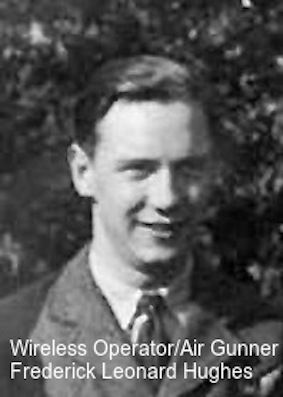
Frederick Leonard Hughes
A photo of Frederick Leonard Hughes. It was very busy at the briefing on Friday, October 2, 1942 at air base
RAF Lakenheath in the county of Suffolk in South East England.
After all, there was another night operation on the program. A bombing flight on the German city of Krefeld. The Short Stirling R9167 with call sign OJ-N of
149 Bomber Squadron would also be part of the fleet of planes that would make the crossing to the European mainland. Squadron leader and pilot Roy Greenslade commanded six NCO’s, each with their specific task.
Everyone being ready for departure, they chose the airspace at 7.06 pm in the evening.
First it was important to form the fleet of bombers. As many as 188 aircraft would eventually take part in the action. 95 Wellingtons, 39 Halifaxes, 31 Lancasters and 23 Stirlings. The Pathfinders (scouts) reported dense fog veils that night above the city of Krefeld when they made the crossing over the North Sea. As a result, the bombs fell on the outskirts of Krefeld and were not concentrated in the center. The Germans did not give the attack the qualification of "Grossangriff". Nevertheless, the loss percentage for the British was three percent. Of the seven aircraft that were lost, one ended up in Kronenberg in the south east of The Netherlands. It was the Short Stirling R9167 from Roy Greenslade and his crew.
In the beginning of 1941, the Germans set up combat posts in a line from Denmark over The Netherlands, south to Belgium and France of which three combat posts in The Netherlands in Nachtjagdraum 5. One of them was combat post 5B in Veulen, a small village near the Venray municipality. These combat posts would play a key role in the air war until the autumn of 1944. The German night fighters who were led from fighter post 5B in Veulen were from I / NJG-1 Nachtjagdgeschwader, which was stationed at Fliegerhorst Venlo, the largest German airfield outside Germany during the Second World War with an occupation of approximately 2000 troops.
The radar equipment that belonged to such combat posts stood as far as possible in the front field in a westerly direction. For Veulen this radar station was located about 3.5 km south of De Rips in Noord Brabant. Here a Frya detection radar and two Würzburg Riese tracking radar installations were installed. This combined radar station was called BAZI. The Germans often used animal names and BAZI is the abbreviation for Bazille (baccil).
As soon as the Allied bombers were detected by the radar station, this was passed on to the combat post in Veulen. The position of the own planes and the enemy planes was displayed on a so-called plot table and kept constantly up-to-date by means of red and green lights. (Red for the Allied aircraft and green for their own German aircraft.)
Through a short-wave connection, the Jägerleitoffizier passed on the position of the approaching aircraft to his night fighters in encoded messages.
The cumbersome bombers were an easy prey for the fast German
Messerschmitts who prefered to shoot these bombers from the bottom up with their board guns.
And so it happened, that Oberleutnant Flieger Hans Dieter Frank and marconist Gefreiter Erich Gotter were ordered in the evening of October 2, 1942, around 09:15 pm
to launch an attack on British bombers on their way to Krefeld in a flight of 188 aircraft. The Short Stirling R9167 - OJ-N, belonging to a group of three aircraft from 149 Squadron, received its first direct hits at 21.31 hours above the municipality of Horst. Just after that, the aircraft started to burn. In a last desperate attempt to stay in the air, the Short Stirling opened the bomb shutters, bringing the load of hundreds of phosphorus bombs down and falling in Swolgen and the municipality of Horst, fortunately without causing any significant damage. However, it did not help anymore. Over Horst, Oberleutnant Frank once again hit the plane hard and a moment later at 21.34 hours the burning bomber crashed in a plot of land of the Pijpers family in Kronenberg, shifted the road and stopped at the edge of the forest. There it has been burning for days. Local residents rushed to the burning wreck immediately and found the half-burned bodies of several crew members in the area and near the wreckage. A moment later it was discovered that one of the occupants of the aircraft was still alive. He layed heavily wounded in the field and pointed constantly to the ring on his left ring finger, which had already been swollen. One of the bystanders understood what the man meant and managed to get the ring off the finger. Just after that a patrol of the Feldgendarmerie (German Military Police) appeared and the people were pushed back. The unknown crew member died on the spot before he could be transported to the hospital in Venlo. After the war it was determined which aircraft had crashed that night in Kronenberg. They also found out the names of the crew members. The only one still alive after the crash of the Short Stirling turned out to be Sergeant Ernest.Leslie Moore, Air Gunner. The ring was sent to his parents shortly after the liberation.
All seven crew members were killed in the crash.
Crew Short Stirling R9167 (Code OJ-N)
149 Squadron A.F.C. R.A.F.
1 Squadron Leader Pilot: William Roy Greenslade, R.A.F. (DFC-AFC-MiD)
(Youngstown Alberta, Canada) Age 25.
Jonkerbos War Cemetery 20.D.3 Nijmegen – The Netherlands
2 Flight Sergeant Air Gunner: William Orange, R.A.F.
(Bedlington Morpeth-UK) Age 27.
Jonkerbos War Cemetery 20.D.8 Nijmegen – The Netherlands
3 Sergeant Flight Engineer: Marshal Kenneth Smith R.A.F.
(Cambridge-UK) Age 21.
Jonkerbos War Cemetery 20.D.6 Nijmegen – The Netherlands
4 Sergeant Wireless Op./Air Gunner: Frederick Leonard Hughes R.A.F.
(Shoreditch, London-UK) Age 21.
Jonkerbos War Cemetery 20.D.7 Nijmegen – The Netherlands
5 Sergeant Wireless Op./Air Gunner: Ernest Leslie Moore R.A.F.
(Leicester-UK) Age 20.
Jonkerbos War Cemetery 20.D.4 Nijmegen – The Netherlands
6 Sergeant Air Gunner: Benjamin Frederick Goldsmith R.A.F.
(Prestwick Lancashire-UK) Age 22.
Jonkerbos War Cemetery 20.D.5 Nijmegen – The Netherlands
7 Flight Sergeant Air Observer Robert Francis McIntyre R.C.A.F.
(Vancouver, British Columbia, Canada) Age 25.
Jonkersbos War Cemetery 20.D.9 Nijmegen – The Netherlands
Lest we forget
RAF Lakenheath in the county of Suffolk in South East England.
After all, there was another night operation on the program. A bombing flight on the German city of Krefeld. The Short Stirling R9167 with call sign OJ-N of
149 Bomber Squadron would also be part of the fleet of planes that would make the crossing to the European mainland. Squadron leader and pilot Roy Greenslade commanded six NCO’s, each with their specific task.
Everyone being ready for departure, they chose the airspace at 7.06 pm in the evening.
First it was important to form the fleet of bombers. As many as 188 aircraft would eventually take part in the action. 95 Wellingtons, 39 Halifaxes, 31 Lancasters and 23 Stirlings. The Pathfinders (scouts) reported dense fog veils that night above the city of Krefeld when they made the crossing over the North Sea. As a result, the bombs fell on the outskirts of Krefeld and were not concentrated in the center. The Germans did not give the attack the qualification of "Grossangriff". Nevertheless, the loss percentage for the British was three percent. Of the seven aircraft that were lost, one ended up in Kronenberg in the south east of The Netherlands. It was the Short Stirling R9167 from Roy Greenslade and his crew.
In the beginning of 1941, the Germans set up combat posts in a line from Denmark over The Netherlands, south to Belgium and France of which three combat posts in The Netherlands in Nachtjagdraum 5. One of them was combat post 5B in Veulen, a small village near the Venray municipality. These combat posts would play a key role in the air war until the autumn of 1944. The German night fighters who were led from fighter post 5B in Veulen were from I / NJG-1 Nachtjagdgeschwader, which was stationed at Fliegerhorst Venlo, the largest German airfield outside Germany during the Second World War with an occupation of approximately 2000 troops.
The radar equipment that belonged to such combat posts stood as far as possible in the front field in a westerly direction. For Veulen this radar station was located about 3.5 km south of De Rips in Noord Brabant. Here a Frya detection radar and two Würzburg Riese tracking radar installations were installed. This combined radar station was called BAZI. The Germans often used animal names and BAZI is the abbreviation for Bazille (baccil).
As soon as the Allied bombers were detected by the radar station, this was passed on to the combat post in Veulen. The position of the own planes and the enemy planes was displayed on a so-called plot table and kept constantly up-to-date by means of red and green lights. (Red for the Allied aircraft and green for their own German aircraft.)
Through a short-wave connection, the Jägerleitoffizier passed on the position of the approaching aircraft to his night fighters in encoded messages.
The cumbersome bombers were an easy prey for the fast German
Messerschmitts who prefered to shoot these bombers from the bottom up with their board guns.
And so it happened, that Oberleutnant Flieger Hans Dieter Frank and marconist Gefreiter Erich Gotter were ordered in the evening of October 2, 1942, around 09:15 pm
to launch an attack on British bombers on their way to Krefeld in a flight of 188 aircraft. The Short Stirling R9167 - OJ-N, belonging to a group of three aircraft from 149 Squadron, received its first direct hits at 21.31 hours above the municipality of Horst. Just after that, the aircraft started to burn. In a last desperate attempt to stay in the air, the Short Stirling opened the bomb shutters, bringing the load of hundreds of phosphorus bombs down and falling in Swolgen and the municipality of Horst, fortunately without causing any significant damage. However, it did not help anymore. Over Horst, Oberleutnant Frank once again hit the plane hard and a moment later at 21.34 hours the burning bomber crashed in a plot of land of the Pijpers family in Kronenberg, shifted the road and stopped at the edge of the forest. There it has been burning for days. Local residents rushed to the burning wreck immediately and found the half-burned bodies of several crew members in the area and near the wreckage. A moment later it was discovered that one of the occupants of the aircraft was still alive. He layed heavily wounded in the field and pointed constantly to the ring on his left ring finger, which had already been swollen. One of the bystanders understood what the man meant and managed to get the ring off the finger. Just after that a patrol of the Feldgendarmerie (German Military Police) appeared and the people were pushed back. The unknown crew member died on the spot before he could be transported to the hospital in Venlo. After the war it was determined which aircraft had crashed that night in Kronenberg. They also found out the names of the crew members. The only one still alive after the crash of the Short Stirling turned out to be Sergeant Ernest.Leslie Moore, Air Gunner. The ring was sent to his parents shortly after the liberation.
All seven crew members were killed in the crash.
Crew Short Stirling R9167 (Code OJ-N)
149 Squadron A.F.C. R.A.F.
1 Squadron Leader Pilot: William Roy Greenslade, R.A.F. (DFC-AFC-MiD)
(Youngstown Alberta, Canada) Age 25.
Jonkerbos War Cemetery 20.D.3 Nijmegen – The Netherlands
2 Flight Sergeant Air Gunner: William Orange, R.A.F.
(Bedlington Morpeth-UK) Age 27.
Jonkerbos War Cemetery 20.D.8 Nijmegen – The Netherlands
3 Sergeant Flight Engineer: Marshal Kenneth Smith R.A.F.
(Cambridge-UK) Age 21.
Jonkerbos War Cemetery 20.D.6 Nijmegen – The Netherlands
4 Sergeant Wireless Op./Air Gunner: Frederick Leonard Hughes R.A.F.
(Shoreditch, London-UK) Age 21.
Jonkerbos War Cemetery 20.D.7 Nijmegen – The Netherlands
5 Sergeant Wireless Op./Air Gunner: Ernest Leslie Moore R.A.F.
(Leicester-UK) Age 20.
Jonkerbos War Cemetery 20.D.4 Nijmegen – The Netherlands
6 Sergeant Air Gunner: Benjamin Frederick Goldsmith R.A.F.
(Prestwick Lancashire-UK) Age 22.
Jonkerbos War Cemetery 20.D.5 Nijmegen – The Netherlands
7 Flight Sergeant Air Observer Robert Francis McIntyre R.C.A.F.
(Vancouver, British Columbia, Canada) Age 25.
Jonkersbos War Cemetery 20.D.9 Nijmegen – The Netherlands
Lest we forget

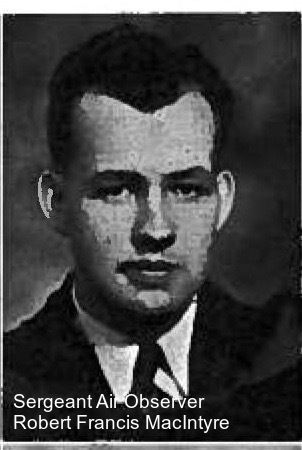
Robert Francis Mcintyre
A photo of Robert Francis Mcintyre. It was very busy at the briefing on Friday, October 2, 1942 at air base
RAF Lakenheath in the county of Suffolk in South East England.
After all, there was another night operation on the program. A bombing flight on the German city of Krefeld. The Short Stirling R9167 with call sign OJ-N of
149 Bomber Squadron would also be part of the fleet of planes that would make the crossing to the European mainland. Squadron leader and pilot Roy Greenslade commanded six NCO’s, each with their specific task.
Everyone being ready for departure, they chose the airspace at 7.06 pm in the evening.
First it was important to form the fleet of bombers. As many as 188 aircraft would eventually take part in the action. 95 Wellingtons, 39 Halifaxes, 31 Lancasters and 23 Stirlings. The Pathfinders (scouts) reported dense fog veils that night above the city of Krefeld when they made the crossing over the North Sea. As a result, the bombs fell on the outskirts of Krefeld and were not concentrated in the center. The Germans did not give the attack the qualification of "Grossangriff". Nevertheless, the loss percentage for the British was three percent. Of the seven aircraft that were lost, one ended up in Kronenberg in the south east of The Netherlands. It was the Short Stirling R9167 from Roy Greenslade and his crew.
In the beginning of 1941, the Germans set up combat posts in a line from Denmark over The Netherlands, south to Belgium and France of which three combat posts in The Netherlands in Nachtjagdraum 5. One of them was combat post 5B in Veulen, a small village near the Venray municipality. These combat posts would play a key role in the air war until the autumn of 1944. The German night fighters who were led from fighter post 5B in Veulen were from I / NJG-1 Nachtjagdgeschwader, which was stationed at Fliegerhorst Venlo, the largest German airfield outside Germany during the Second World War with an occupation of approximately 2000 troops.
The radar equipment that belonged to such combat posts stood as far as possible in the front field in a westerly direction. For Veulen this radar station was located about 3.5 km south of De Rips in Noord Brabant. Here a Frya detection radar and two Würzburg Riese tracking radar installations were installed. This combined radar station was called BAZI. The Germans often used animal names and BAZI is the abbreviation for Bazille (baccil).
As soon as the Allied bombers were detected by the radar station, this was passed on to the combat post in Veulen. The position of the own planes and the enemy planes was displayed on a so-called plot table and kept constantly up-to-date by means of red and green lights. (Red for the Allied aircraft and green for their own German aircraft.)
Through a short-wave connection, the Jägerleitoffizier passed on the position of the approaching aircraft to his night fighters in encoded messages.
The cumbersome bombers were an easy prey for the fast German
Messerschmitts who prefered to shoot these bombers from the bottom up with their board guns.
And so it happened, that Oberleutnant Flieger Hans Dieter Frank and marconist Gefreiter Erich Gotter were ordered in the evening of October 2, 1942, around 09:15 pm
to launch an attack on British bombers on their way to Krefeld in a flight of 188 aircraft. The Short Stirling R9167 - OJ-N, belonging to a group of three aircraft from 149 Squadron, received its first direct hits at 21.31 hours above the municipality of Horst. Just after that, the aircraft started to burn. In a last desperate attempt to stay in the air, the Short Stirling opened the bomb shutters, bringing the load of hundreds of phosphorus bombs down and falling in Swolgen and the municipality of Horst, fortunately without causing any significant damage. However, it did not help anymore. Over Horst, Oberleutnant Frank once again hit the plane hard and a moment later at 21.34 hours the burning bomber crashed in a plot of land of the Pijpers family in Kronenberg, shifted the road and stopped at the edge of the forest. There it has been burning for days. Local residents rushed to the burning wreck immediately and found the half-burned bodies of several crew members in the area and near the wreckage. A moment later it was discovered that one of the occupants of the aircraft was still alive. He layed heavily wounded in the field and pointed constantly to the ring on his left ring finger, which had already been swollen. One of the bystanders understood what the man meant and managed to get the ring off the finger. Just after that a patrol of the Feldgendarmerie (German Military Police) appeared and the people were pushed back. The unknown crew member died on the spot before he could be transported to the hospital in Venlo. After the war it was determined which aircraft had crashed that night in Kronenberg. They also found out the names of the crew members. The only one still alive after the crash of the Short Stirling turned out to be Sergeant Ernest.Leslie Moore, Air Gunner. The ring was sent to his parents shortly after the liberation.
All seven crew members were killed in the crash.
Crew Short Stirling R9167 (Code OJ-N)
149 Squadron A.F.C. R.A.F.
1 Squadron Leader Pilot: William Roy Greenslade, R.A.F. (DFC-AFC-MiD)
(Youngstown Alberta, Canada) Age 25.
Jonkerbos War Cemetery 20.D.3 Nijmegen – The Netherlands
2 Flight Sergeant Air Gunner: William Orange, R.A.F.
(Bedlington Morpeth-UK) Age 27.
Jonkerbos War Cemetery 20.D.8 Nijmegen – The Netherlands
3 Sergeant Flight Engineer: Marshal Kenneth Smith R.A.F.
(Cambridge-UK) Age 21.
Jonkerbos War Cemetery 20.D.6 Nijmegen – The Netherlands
4 Sergeant Wireless Op./Air Gunner: Frederick Leonard Hughes R.A.F.
(Shoreditch, London-UK) Age 21.
Jonkerbos War Cemetery 20.D.7 Nijmegen – The Netherlands
5 Sergeant Wireless Op./Air Gunner: Ernest Leslie Moore R.A.F.
(Leicester-UK) Age 20.
Jonkerbos War Cemetery 20.D.4 Nijmegen – The Netherlands
6 Sergeant Air Gunner: Benjamin Frederick Goldsmith R.A.F.
(Prestwick Lancashire-UK) Age 22.
Jonkerbos War Cemetery 20.D.5 Nijmegen – The Netherlands
7 Flight Sergeant Air Observer Robert Francis McIntyre R.C.A.F.
(Vancouver, British Columbia, Canada) Age 25.
Jonkersbos War Cemetery 20.D.9 Nijmegen – The Netherlands
Lest we forget
RAF Lakenheath in the county of Suffolk in South East England.
After all, there was another night operation on the program. A bombing flight on the German city of Krefeld. The Short Stirling R9167 with call sign OJ-N of
149 Bomber Squadron would also be part of the fleet of planes that would make the crossing to the European mainland. Squadron leader and pilot Roy Greenslade commanded six NCO’s, each with their specific task.
Everyone being ready for departure, they chose the airspace at 7.06 pm in the evening.
First it was important to form the fleet of bombers. As many as 188 aircraft would eventually take part in the action. 95 Wellingtons, 39 Halifaxes, 31 Lancasters and 23 Stirlings. The Pathfinders (scouts) reported dense fog veils that night above the city of Krefeld when they made the crossing over the North Sea. As a result, the bombs fell on the outskirts of Krefeld and were not concentrated in the center. The Germans did not give the attack the qualification of "Grossangriff". Nevertheless, the loss percentage for the British was three percent. Of the seven aircraft that were lost, one ended up in Kronenberg in the south east of The Netherlands. It was the Short Stirling R9167 from Roy Greenslade and his crew.
In the beginning of 1941, the Germans set up combat posts in a line from Denmark over The Netherlands, south to Belgium and France of which three combat posts in The Netherlands in Nachtjagdraum 5. One of them was combat post 5B in Veulen, a small village near the Venray municipality. These combat posts would play a key role in the air war until the autumn of 1944. The German night fighters who were led from fighter post 5B in Veulen were from I / NJG-1 Nachtjagdgeschwader, which was stationed at Fliegerhorst Venlo, the largest German airfield outside Germany during the Second World War with an occupation of approximately 2000 troops.
The radar equipment that belonged to such combat posts stood as far as possible in the front field in a westerly direction. For Veulen this radar station was located about 3.5 km south of De Rips in Noord Brabant. Here a Frya detection radar and two Würzburg Riese tracking radar installations were installed. This combined radar station was called BAZI. The Germans often used animal names and BAZI is the abbreviation for Bazille (baccil).
As soon as the Allied bombers were detected by the radar station, this was passed on to the combat post in Veulen. The position of the own planes and the enemy planes was displayed on a so-called plot table and kept constantly up-to-date by means of red and green lights. (Red for the Allied aircraft and green for their own German aircraft.)
Through a short-wave connection, the Jägerleitoffizier passed on the position of the approaching aircraft to his night fighters in encoded messages.
The cumbersome bombers were an easy prey for the fast German
Messerschmitts who prefered to shoot these bombers from the bottom up with their board guns.
And so it happened, that Oberleutnant Flieger Hans Dieter Frank and marconist Gefreiter Erich Gotter were ordered in the evening of October 2, 1942, around 09:15 pm
to launch an attack on British bombers on their way to Krefeld in a flight of 188 aircraft. The Short Stirling R9167 - OJ-N, belonging to a group of three aircraft from 149 Squadron, received its first direct hits at 21.31 hours above the municipality of Horst. Just after that, the aircraft started to burn. In a last desperate attempt to stay in the air, the Short Stirling opened the bomb shutters, bringing the load of hundreds of phosphorus bombs down and falling in Swolgen and the municipality of Horst, fortunately without causing any significant damage. However, it did not help anymore. Over Horst, Oberleutnant Frank once again hit the plane hard and a moment later at 21.34 hours the burning bomber crashed in a plot of land of the Pijpers family in Kronenberg, shifted the road and stopped at the edge of the forest. There it has been burning for days. Local residents rushed to the burning wreck immediately and found the half-burned bodies of several crew members in the area and near the wreckage. A moment later it was discovered that one of the occupants of the aircraft was still alive. He layed heavily wounded in the field and pointed constantly to the ring on his left ring finger, which had already been swollen. One of the bystanders understood what the man meant and managed to get the ring off the finger. Just after that a patrol of the Feldgendarmerie (German Military Police) appeared and the people were pushed back. The unknown crew member died on the spot before he could be transported to the hospital in Venlo. After the war it was determined which aircraft had crashed that night in Kronenberg. They also found out the names of the crew members. The only one still alive after the crash of the Short Stirling turned out to be Sergeant Ernest.Leslie Moore, Air Gunner. The ring was sent to his parents shortly after the liberation.
All seven crew members were killed in the crash.
Crew Short Stirling R9167 (Code OJ-N)
149 Squadron A.F.C. R.A.F.
1 Squadron Leader Pilot: William Roy Greenslade, R.A.F. (DFC-AFC-MiD)
(Youngstown Alberta, Canada) Age 25.
Jonkerbos War Cemetery 20.D.3 Nijmegen – The Netherlands
2 Flight Sergeant Air Gunner: William Orange, R.A.F.
(Bedlington Morpeth-UK) Age 27.
Jonkerbos War Cemetery 20.D.8 Nijmegen – The Netherlands
3 Sergeant Flight Engineer: Marshal Kenneth Smith R.A.F.
(Cambridge-UK) Age 21.
Jonkerbos War Cemetery 20.D.6 Nijmegen – The Netherlands
4 Sergeant Wireless Op./Air Gunner: Frederick Leonard Hughes R.A.F.
(Shoreditch, London-UK) Age 21.
Jonkerbos War Cemetery 20.D.7 Nijmegen – The Netherlands
5 Sergeant Wireless Op./Air Gunner: Ernest Leslie Moore R.A.F.
(Leicester-UK) Age 20.
Jonkerbos War Cemetery 20.D.4 Nijmegen – The Netherlands
6 Sergeant Air Gunner: Benjamin Frederick Goldsmith R.A.F.
(Prestwick Lancashire-UK) Age 22.
Jonkerbos War Cemetery 20.D.5 Nijmegen – The Netherlands
7 Flight Sergeant Air Observer Robert Francis McIntyre R.C.A.F.
(Vancouver, British Columbia, Canada) Age 25.
Jonkersbos War Cemetery 20.D.9 Nijmegen – The Netherlands
Lest we forget
Azadar Azdar
About me:I haven't shared any details about myself.


HALYX Promotional Poster for 1981 Disneyland Performances
The promotional poster for HALYX which performed at Disneyland in Anaheim California for the summer of 1981.
Lora Mumford was the lead singer of Halyx which blended science-fiction and rock and roll (inspired from KISS and Star Wars) and performed in Tomorrowland on the stage of Space Mountain during one summer.
Lora Mumford was the lead singer of Halyx which blended science-fiction and rock and roll (inspired from KISS and Star Wars) and performed in Tomorrowland on the stage of Space Mountain during one summer.
People tagged:

